If you’re like me, figuring out how long foods truly last in the pantry can feel like a guessing game. No one wants to find a bag of flour crawling with bugs or a can of beans with a suspicious bulge. That’s where a good pantry storage chart becomes really handy. It helps you stretch your grocery budget, keep meals safe, and cut down on food waste. So, I’m breaking down the real shelf life of common foods, with clear answers to those tricky questions about expiration, 25-year storage, and eating from ancient cans.

How Long Does Food Last in the Pantry?
Pantry staples do not all age the same. Shelf life depends on a food’s moisture, fat content, packaging, and whether it’s opened. Dry foods usually hang on the longest. Here’s what you can expect from common items if you keep them in a cool, dry, dark place:
- Rice, White: Unopened, 4-5 years. Once opened, best within 1-2 years. Brown rice has more oils, so just 6 months opened, or up to a year unopened.
- Pasta: About 1-2 years past its best-by date if unopened. Whole wheat goes bad faster (6-12 months) due to its natural fats.
- Oats: Plain rolled oats last about 1-2 years when sealed, less if they’re exposed to moisture.
- Canned Vegetables & Beans: Safely edible up to 2-5 years past the production date if the can is undamaged. The taste or texture may change.
- Canned Tuna or Salmon: Usually 2-5 years unopened. Once opened, refrigerate and use within 2 days.
- Flour: White flour keeps 1 year sealed, but whole wheat closer to 3-6 months. Exposure to heat, light, or insects shortens this.
- Sugar & Salt: Indefinite (but I’ll get to why these are unique in a minute).
- Honey: Indefinite. It might crystallize but will never truly spoil.
- Nut Butters: 2-3 months at room temp once opened, or about a year unopened. Natural nut butters go rancid faster.
- Baking Powder & Baking Soda: Both are good for about 1-2 years before losing power.
- Dried Beans & Lentils: 2-3 years, but they harden and may take forever to cook if really old.
Sometimes foods seem fine but start to fade in texture or flavor before they actually become dangerous. Always trust your senses—if something has an odd smell, taste, or appearance, play it safe and toss it out. An easy trick I use is to keep a rotation list on the pantry door. That way, you can track which items need to be used soon and stop things from hiding out in the back for years.
Foods That Never Expire: Kitchen MVPs
A few foods, when kept dry and uncontaminated, basically last forever. These are the two that never expire and why they’re pantry royalty:
- Sugar: Bacteria and mold just can’t grow in pure sugar. It might harden over time, but that’s easy to fix (just break it up!). Store it in a tightly sealed container for best results.
- Salt: Pure salt also never goes bad. As long as it stays dry, it can live in your pantry for decades. I keep mine in glass jars or the original box—it’s always ready to go.
- Honey – Found edible in Egyptian tombs! Crystallization is harmless.
- Maple Syrup (unopened) – Lasts years; refrigerate after opening.
- White Vinegar – Shelf stable for decades.
- Whole Spices (peppercorns, cinnamon sticks, etc.) – Keep sealed and dry; lose flavor over time but rarely spoil.
Honey is also in this category. Archaeologists stumbled upon pots of honey in Egyptian tombs and it was still edible after thousands of years! The high sugar content, acidity, and lack of moisture make honey unfriendly for spoilage microbes. If it crystallizes, just gently warm it up and enjoy like usual.
There are a couple more foods worth mentioning—pure maple syrup, unopened white vinegar, and raw, unopened whole spices (like peppercorns or cinnamon sticks) can last for many years when sealed and kept away from humidity. They become less potent over time but rarely go “bad.” For prepping or everyday storage, these MVPs are worth stocking in large quantities.
Foods With a 25-Year Shelf Life
People often ask about foods that last 25 years or more, especially for emergency kits or deep preparedness planning. Most grocery store foods won’t hit that mark, but some special items do, especially if stored in airtight, oxygen-free containers. Here’s what makes it on that ultralong list:
- White Rice: In a sealed Mylar bag with oxygen absorbers, white rice can store for 25-30 years!
- Rolled Oats: Same storage trick—Mylar and oxygen absorbers—can get 25 years, if not more.
- Dehydrated Vegetables: If properly sealed, these last up to 25 years thanks to their low moisture.
- Powdered Milk (Nonfat): Sealed in #10 cans or Mylar, it can last up to 25 years. Fullfat milk powder won’t keep as long due to the fats going rancid.
- Freeze-Dried Meals: Commercially packed meals can stretch out to 25 years or longer. I keep a few of these on hand for disaster kits or long trips.
- Pasta: When vacuum sealed, some pastas can hit 25 years, especially simple shapes and plain ingredients.
Just remember, foods have to stay away from heat, light, pests, and humidity if you’re aiming for several decades of shelf time. Checking on your stockpile now and then helps you catch busted seals or water leaks before they ruin your food. Emergency food storage doesn’t mean you sacrifice taste, either—rotate in some long-lasting spices or seasonings to liven up basic meals when needed.
If you’re setting up your emergency pantry for the first time, start with a few 25-year foods and slowly build up your stash over time. Label everything with purchase or packaging dates so you always know what’s oldest. That way, you won’t end up with a wall of unmarked buckets and no idea what should be eaten first.
Can You Eat 20-Year-Old Canned Food?
This question pops up a lot, especially for folks cleaning out their emergency stash. Here are the real risks and what to watch for:
If a can is intact—no rust, no swelling, no leaks, no severe dents—it might be safe to open and check inside. The nutritional value and flavor can fade, but many canned foods are still safe long after the “best by” date as long as the seal is perfect.
I actually opened a can of corn from 8 years ago (stored in a dry, cool place), and it looked and smelled totally normal! I only tried a tiny bite just to be safe, but there was no weird texture or taste. That said, I won’t eat anything that looks slimy, foams, spurts liquid, or smells off. If the can hisses or explodes when opened, it’s heading straight for the trash. Safety is always more important than saving a dollar!
Some types of canned food—like acidic tomatoes, pineapple, or fruit—don’t last as long as less acidic items like beans or vegetables. Acid wears down the can’s lining over time and can make food turn quicker. If in doubt, skip the taste test and toss anything questionable.
Keep in mind, creative uses for safe, old canned food include emergency meals, slow cooked soups, or as animal feed (if you know it’s still ok but not tasty for you). But for anything odd or off-label, it’s better to stay on the side of caution.
Packing and Storing for Best Pantry Life
How you store food really impacts shelf life. Here are some habits to get the most from your pantry stash:
- Keep it cool: The lower the temperature, the longer your dry goods last. Aim for below 70°F if you can.
- Dry is key: Moisture encourages mold and bugs. A dehumidifier or moisture absorbers help if you live somewhere humid.
- Seal it up: Store dry foods in airtight containers, like glass jars or heavy duty plastic, to block critters and humidity.
- Date and rotate: Use a marker to date foods when you buy or store them, and practice “first in, first out”—use older items before newer ones.
- Check regularly: Peek at your pantry every few months. Toss anything that’s leaking, bulging, or smells off.
For long-term or emergency storage, Mylar bags, oxygen absorbers, and sturdy plastic buckets are your friends. For everyday eats, clear jars and bins keep things organized and fresher. Don’t forget to separate strong-smelling foods (like onions or garlic) from others to avoid off-flavors seeping in.
If you want to give your pantry a next-level cool upgrade, label shelves by food category, keep snacks easy to spot, and add a running inventory list. An organized pantry saves time and money, especially when you’re in a rush and need to find ingredients fast.
Frequently Asked Questions
How long does food last in the pantry?
Dry foods like white rice, beans, and rolled oats last 1-2 years at room temp in original packaging, longer in airtight or vacuum sealed setups. Canned goods last 2-5 years. Pantry basics like sugar, salt, and honey never truly expire.
What two foods never expire?
Sugar and salt never spoil, making them perfect for long-term storage. Keep them in sealed containers to block out pests and moisture.
What foods have a 25 year shelf life?
Freeze-dried meals, white rice, rolled oats, dehydrated vegetables, and nonfat powdered milk (when properly packaged) can last 25 years or longer.
Can you eat 20 year old canned food?
If the can isn’t bulging, leaking, or badly damaged, and it looks and smells normal when you open it, it’s probably safe. High-acid foods may not last as long. Always trust your nose and eyes. When in doubt, better to throw it out.
Final Thoughts
Managing a pantry isn’t just about avoiding waste—it’s about saving money, planning meals, and feeling secure in emergencies. With a pantry storage chart, you’ll know exactly what lasts months, years, or even decades.
👉 Start today: check your pantry, rotate older items forward, and label everything. Your future self (and your grocery budget) will thank you.
© 2025, Teresa. All rights reserved.
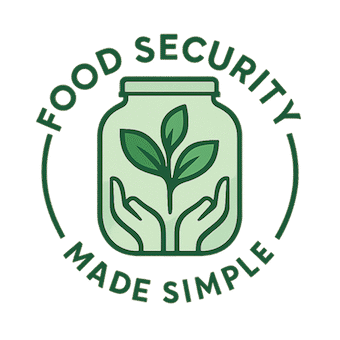





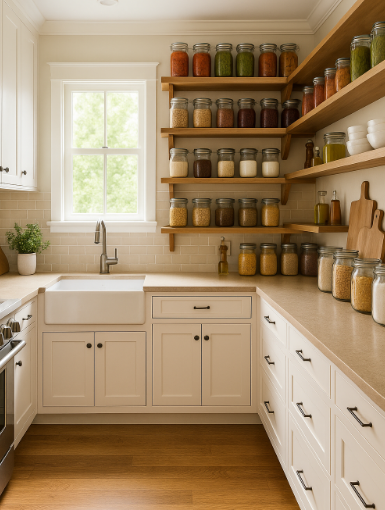
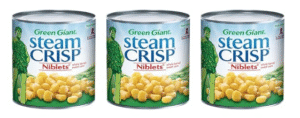
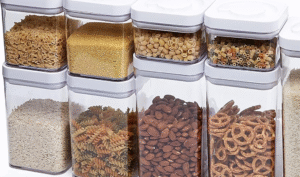
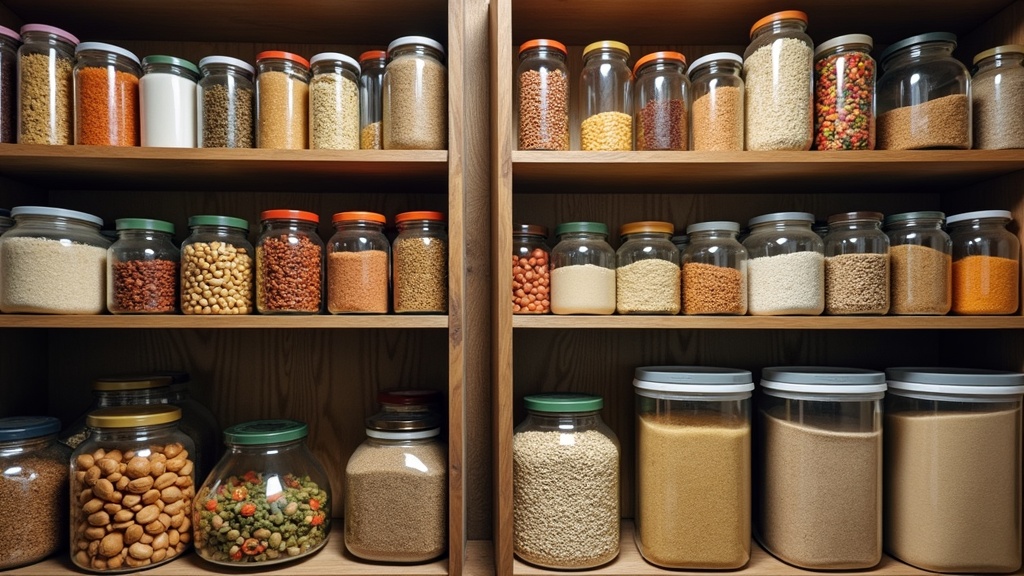
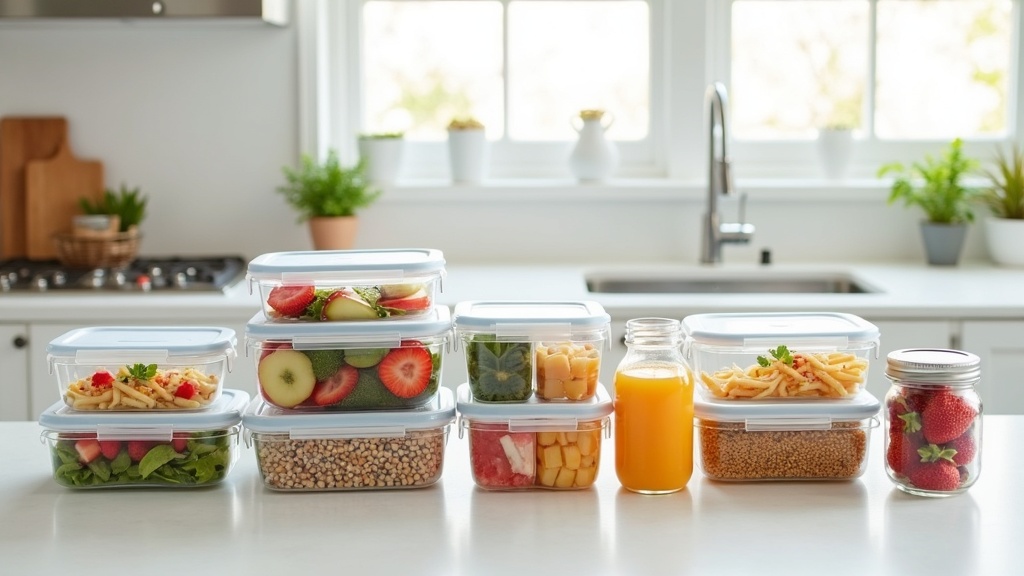
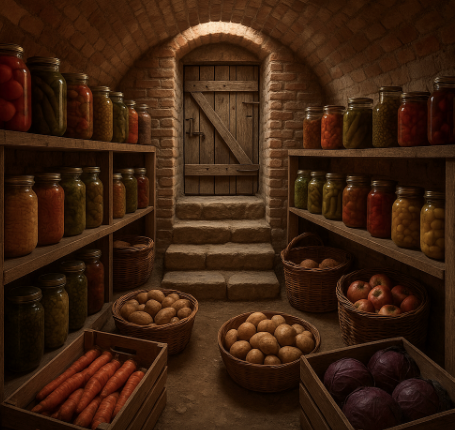
So glad I found this post — it’s exactly what my kitchen needs! Your pantry storage chart is super thorough and clear. I’ve always been a bit unsure about how long items like nuts or flours last, so this is a game-changer. Curious — how do spices and dried herbs stack up in your chart? Do they last as long as whole spices, or do they need special storage to maintain flavor? Thanks for putting together such a practical and easy-to-use resource.
I’m so glad you found the chart helpful! Great question—whole spices do keep their flavor longer than ground ones. Storing both in airtight containers, away from heat and light, really helps maximize freshness.